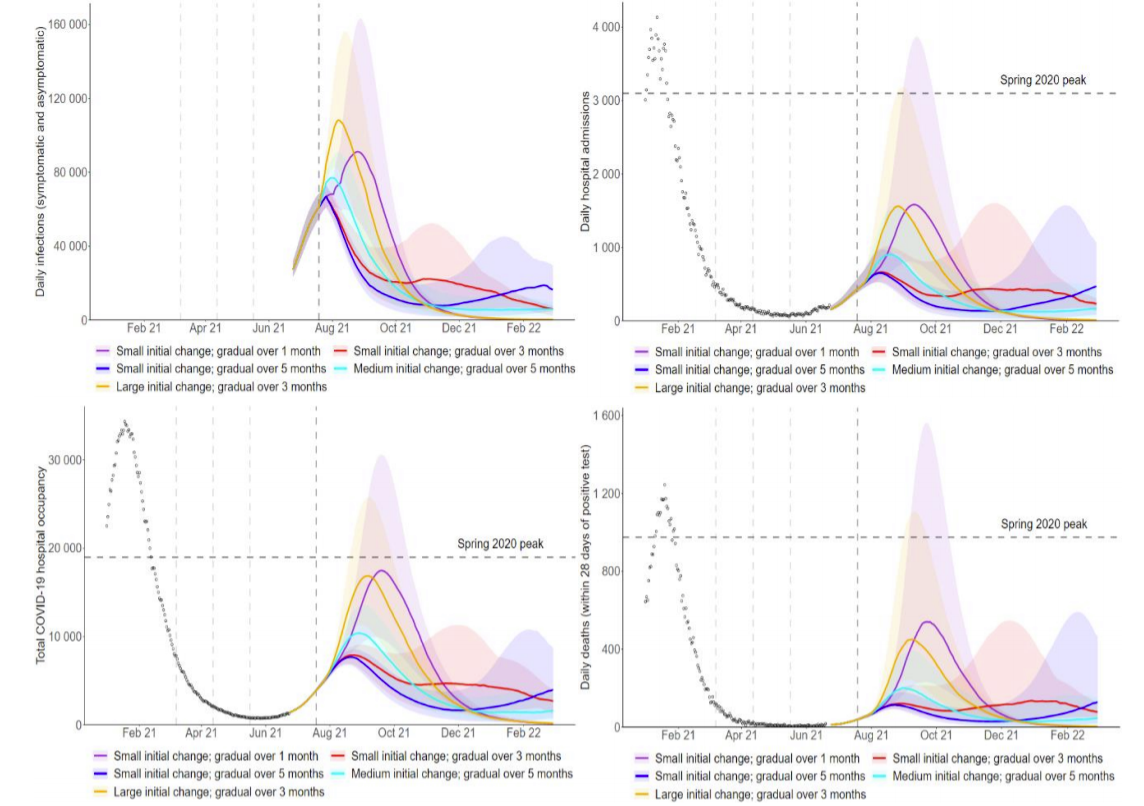FREEDOM Day could still spark a third wave of hospitalisations higher than the second peak, Sage documents have warned.
And it largely comes down to how much people voluntarily stick with measures that will be scrapped by Boris Johnson, such as face-mask wearing.
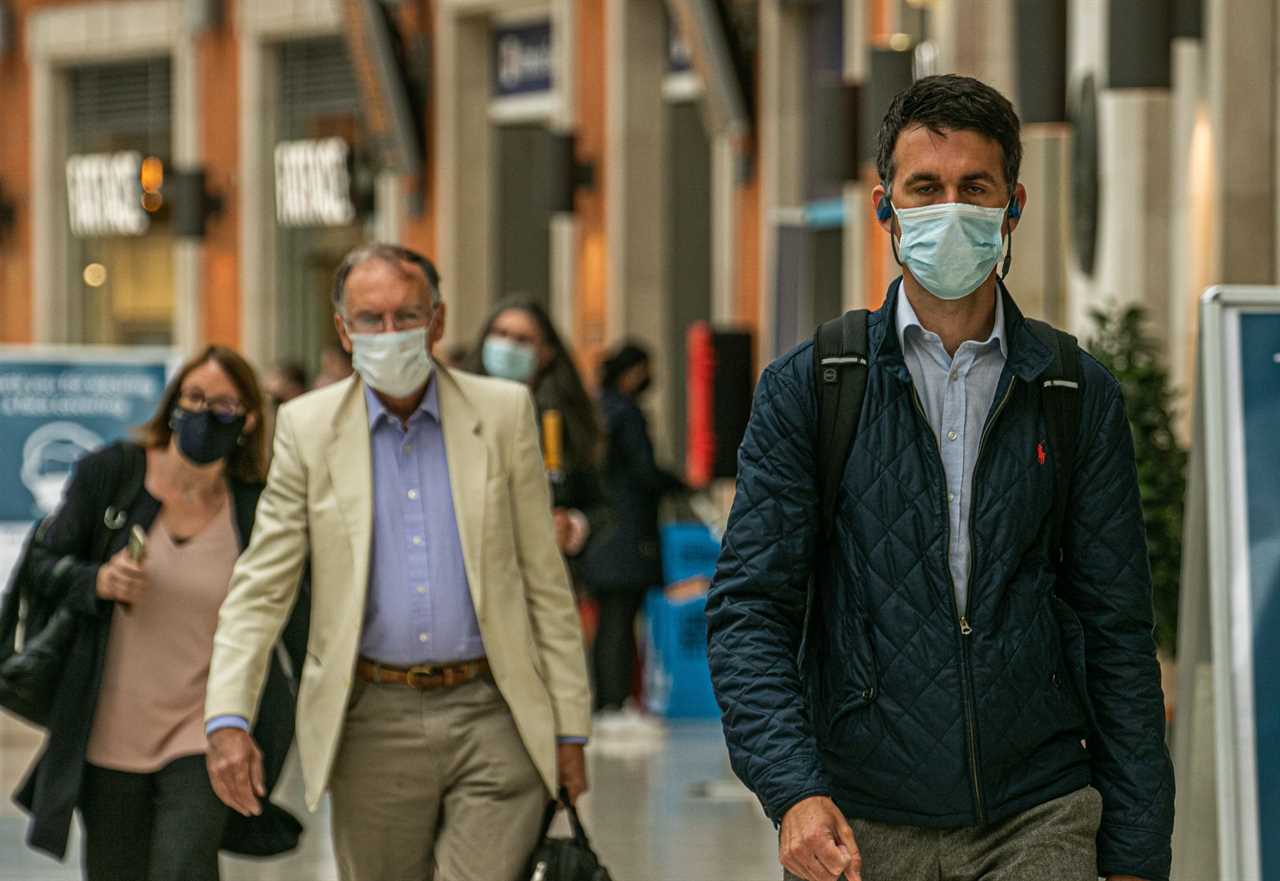
The PM today announced that July 19 will be going ahead, with the majority of legal restrictions dropped.
But Boris Johnson has said mask use will be advised in crowded and enclosed spaces.
He told a Downing Street press conference: “It is absolutely vital that we proceed now with caution and I cannot say this powerfully or emphatically enough: this pandemic is not over.
“We cannot simply revert instantly from Monday July 19 to life as it was before Covid.”
A batch of documents published by the Government today detail what scientists believe will happen from July 19 onwards.
They come from SAGE – the panel of scientists that have been advising the government throughout the pandemic.
Three universities – Imperial, Warwick, and London School of Hygiene and Tropical Medicine (LSHTM) gave modelling to SAGE.
All showed an extremely high level of infection until at least the end of August.

Read our coronavirus live blog for the latest updates
The size and timing of the peak is still unknown and depends on a number of factors, such as how quickly people return to pre-pandemic ways.
But Sage has said hospital admissions are likely to reach 1,000 per day (lower than previous peaks).
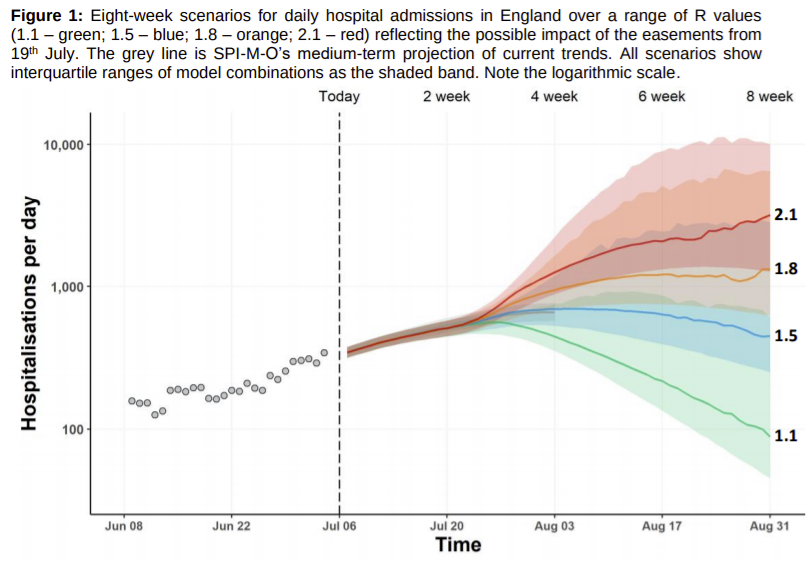
It could be significantly higher under “worst case scenarios” whereby vaccines are not as effective as thought, for example.
“It is almost certain” that deaths will be well below the levels seen in January 2021 thanks to successful jabs.
Even though by law, people will be able to stop wearing face masks, work from home or social distance, SAGE recommends people continue to take caution.
Ultimately, all the universities’ models showed this could drive infection rates down, and therefore hospitalisations.
A summary of the modelling by a Sage subgroup called SPI-M-O made similar warnings.
But it said if people remain wary of the virus, and practise measures that have been in place since March 2020, it could push the third wave peak more into autumn/winter.
SPI-M-O said it will take several weeks for it to become clear if hospitals are coming under pressure as a result of July 19.
Here is a summary of the best and worst case scenarios presented by each university.
IMPERIAL
Imperial’s modelling found that with optimistic assumptions on vaccine efficacy and R number, hospitalisations and deaths are likely to be much lower than in the winter 2021 wave.
But even in this positive scenario, there still could be 9,400 deaths and 77,500 hospital admissions by June 2022.
Figures could exceed the winter wave with more pessimistic assumptions, with 115,800 deaths and 820,000 hospitalisations by June 2022.
Their most central scenario sees “hospitalisation numbers comparable with, but deaths substantially lower than, the second wave”.
It means with their most realistic or “best guess” model, there are an additional 36,700 deaths by next June, and 283,500 hospital admissions.
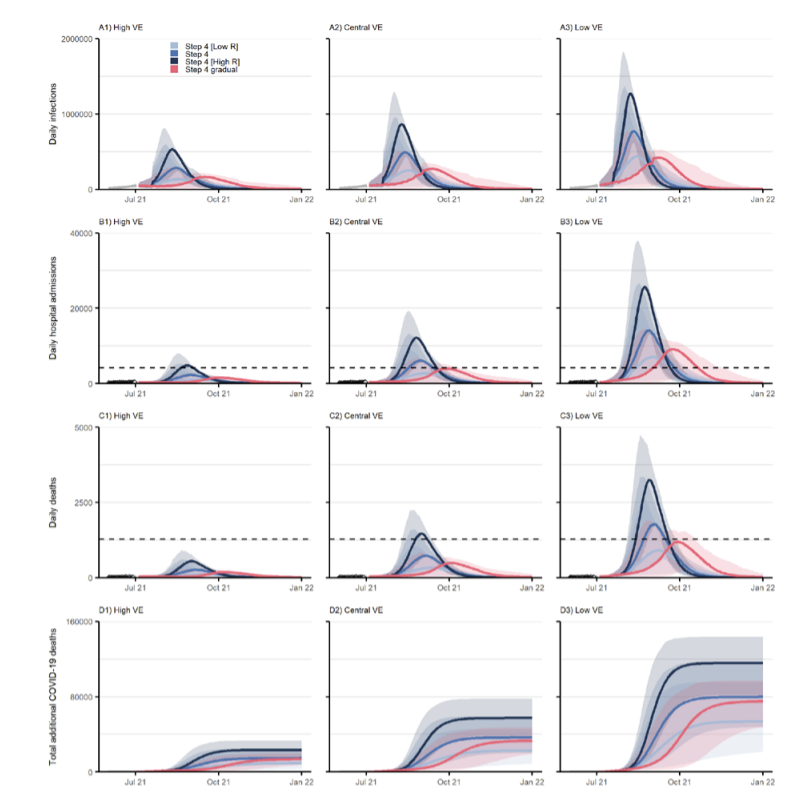
The team said encouraging people to carry on with measures like face mask wearing would play an important role in bringing these figures down.
If people carried on how they were behaving now, slowly changing to September, a third wave would be delayed from the summer to September.
“And hospitalisations and deaths are dampened compared to the scenario with a steep increase in transmission on 19th July”, the paper said.
In this case, a booster campaign may be “critical”.
LSHTM
LSHTM looked at dozens of factors that will influence the third wave including vaccine uptake, waning immunity, whether Delta is more deadly and if people voluntarily continue protecting themselves.
The university said under all models, there would be a peak of transmission in August.
Some showed another weave in the autumn and winter as schools return and Covid is expected to spread easier in colder weather.
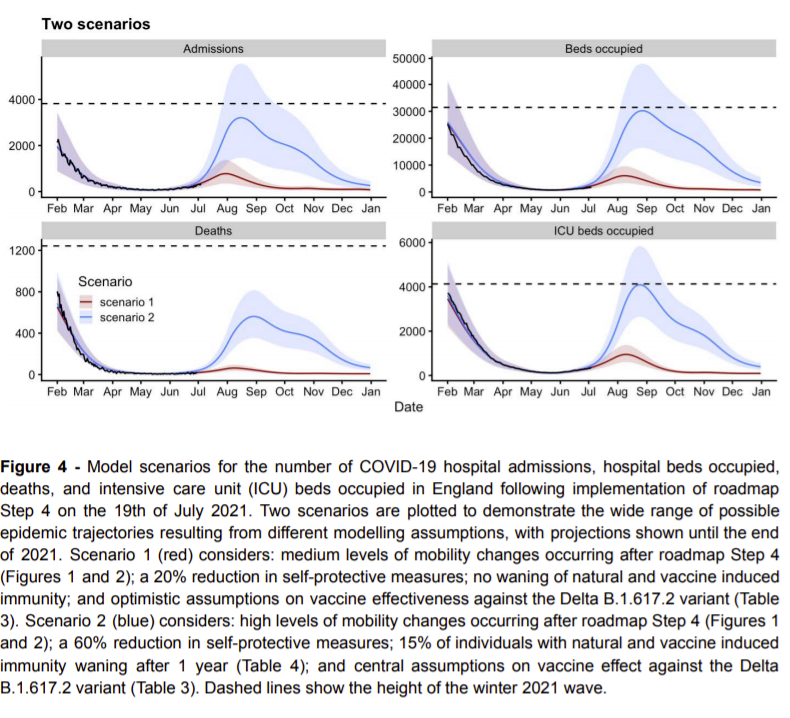
Like Imperial, the more pessimistic outlooks – with people largely returning to pre-pandemic behaviour – “hospital admissions and hospital bed occupancy may exceed the peak levels recorded during the previous wave in January 2021”.
If things snapped back to normal, self-protective measures dropped by 60 per cent, and immunity started waning within a year, hospital admissions could quite easily reach 3,500 per day.
Deaths could peak at around 500-600 a day.
At a slower pace, with only 20 per cent reduction in face-mask wearing and the like, and no waning immunity, there could be just under 1,000 admissions a day.
The burden on mortality “will be lower”, the paper said.
The team considered that even if people were to return to their usual behaviours, such as going to work, there would still be some mitigating factors like Test and Trace which did not exist in the first wave.
If these reduce transmission by at least 20 per cent, peak daily hospital admissions could stay well below 2,000 and deaths 250.

